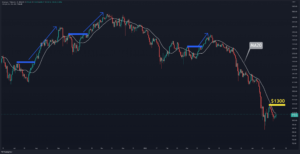
Vitalik Buterin, the co-founder of Ethereum, recently expressed skepticism regarding the prevailing notion of prioritizing simplicity in Layer 1 (L1) blockchains over Layer 2 (L2) solutions.
Buterin disclosed that his confidence in simplifying L1s at the expense of more intricate L2s has diminished significantly over the past five years.
Bug Risks in L2 Networks
Buterin highlighted the dilemma of choosing between the risks associated with bugs in L1 and L2. He stated, “It’s not actually clear that the latter is better!”
He illustrated this with an example of a consensus failure in an L1 blockchain, which is resolved eventually despite causing temporary disruption. He emphasized the potential risks of bugs in L2 networks, which could lead to significant permanent financial losses.
So I would say it’s can actually be worth adding some pretty sophisticated L1 features to reduce the code burden of L2s and allow them to be reasonably simple.
— vitalik.eth (@VitalikButerin) February 21, 2024
Proposing an alternative method, Buterin suggested that it might be beneficial to introduce advanced features to L1 to alleviate the coding complexity of L2s, thereby enabling their simplicity.
Buterin also recently explored using artificial intelligence (AI) to tackle one of Ethereum’s major technical hurdles: the existence of bugs within its code.
Leo Fernevak, a Bitcoin enthusiast, initiated the discussion by stating on X that scaling would not occur on the base layer. He argued that complex features could be developed on L2s and that the base layer would inevitably become full, regardless of scaling attempts.
Buterin Speaks on L2 Networks
L2 solutions are designed to increase throughput by processing transactions off the main L1 blockchain. However, the complexity of these solutions can lead to bugs that are difficult to detect and resolve.
Bugs in L2 networks can lead to significant financial losses. For example, a bug in a payment channel like the Lightning Network could lead to incorrect transaction records, potentially resulting in loss of funds.
This is correct.
The core of being a rollup is the unconditional security guarantee: you can get your assets out even if everyone else colludes against you. Can’t get that if DA is dependent on an external system.
But being a validium is a correct choice for many apps, and…
— vitalik.eth (@VitalikButerin) January 16, 2024
Buterin also recently discussed L2 networks, explaining that L2s are categorized into rollups and validiums while emphasizing the importance of understanding their security and scalability features.
Rollups consolidate transactions into a single proof on the main chain, prioritizing security. In contrast, validiums prioritize scalability by storing data off-chain but keep proofs on-chain, with a slight security compromise.
Despite subtle differences, choosing between rollups and validiums has significant implications. Rollups offer heightened security but come with higher costs, while validiums are more cost-effective with a small security trade-off.
Binance Free $100 (Exclusive): Use this link to register and receive $100 free and 10% off fees on Binance Futures first month (terms).
- SEO Powered Content & PR Distribution. Get Amplified Today.
- PlatoData.Network Vertical Generative Ai. Empower Yourself. Access Here.
- PlatoAiStream. Web3 Intelligence. Knowledge Amplified. Access Here.
- PlatoESG. Carbon, CleanTech, Energy, Environment, Solar, Waste Management. Access Here.
- PlatoHealth. Biotech and Clinical Trials Intelligence. Access Here.
- Source: https://cryptopotato.com/vitalik-buterin-advocates-for-advanced-l1-features/
- :has
- :is
- :not
- 1
- 16
- 2%
- 21
- a
- actually
- adding
- advanced
- advocates
- against
- AI
- alleviate
- allow
- also
- alternative
- an
- and
- apps
- ARE
- argued
- artificial
- artificial intelligence
- Artificial intelligence (AI)
- Assets
- associated
- At
- Attempts
- background
- banner
- base
- BE
- become
- being
- beneficial
- between
- binance
- Binance Futures
- Bitcoin
- blockchain
- blockchains
- border
- Bug
- bugs
- burden
- but
- Buterin
- by
- CAN
- Can Get
- categorized
- causing
- chain
- Channel
- choice
- choosing
- clear
- Co-founder
- Co-Founder of Ethereum
- code
- Coding
- color
- come
- complex
- complexity
- compromise
- confidence
- Consensus
- consolidate
- content
- contrast
- Core
- correct
- cost-effective
- Costs
- could
- DA
- data
- dependent
- designed
- Despite
- detect
- developed
- differences
- difficult
- dilemma
- discussed
- discussion
- Disruption
- else
- emphasized
- emphasizing
- enabling
- end
- enjoy
- enthusiast
- ETH
- ethereum
- Ethereum's
- Even
- eventually
- everyone
- example
- Exclusive
- existence
- expense
- explaining
- Explored
- expressed
- external
- Failure
- Features
- Fees
- financial
- First
- five
- For
- Free
- full
- funds
- Futures
- get
- guarantee
- he
- heightened
- higher
- Highlighted
- his
- However
- HTTPS
- Hurdles
- i
- if
- implications
- importance
- in
- incorrect
- Increase
- inevitably
- initiated
- Intelligence
- internal
- into
- intricate
- introduce
- IT
- ITS
- jpg
- Keep
- l2
- latter
- layer
- layer 1
- Layer 2
- lead
- lightning
- Lightning Network
- like
- loss
- losses
- Main
- major
- many
- Margin
- method
- might
- more
- network
- networks
- None
- Notion
- occur
- of
- off
- offer
- on
- On-Chain
- ONE
- out
- over
- past
- payment
- permanent
- plato
- Plato Data Intelligence
- PlatoData
- potential
- potentially
- pretty
- prevailing
- Prioritize
- prioritizing
- processing
- proof
- proofs
- Reading
- receive
- recently
- records
- reduce
- regarding
- Regardless
- register
- resolve
- resolved
- resulting
- risks
- rollup
- Rollups
- say
- Scalability
- scaling
- security
- Share
- significant
- significantly
- Simple
- simplicity
- simplifying
- single
- Skepticism
- slight
- small
- solid
- Solutions
- some
- sophisticated
- Speaks
- Sponsored
- stated
- storing
- subtle
- system
- Technical
- temporary
- that
- The
- The Lightning Network
- their
- Them
- thereby
- These
- this
- throughput
- to
- transaction
- Transactions
- unconditional
- understanding
- using
- vitalik
- vitalik buterin
- which
- while
- with
- within
- worth
- would
- X
- years
- you
- Your
- zephyrnet









